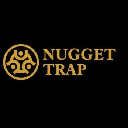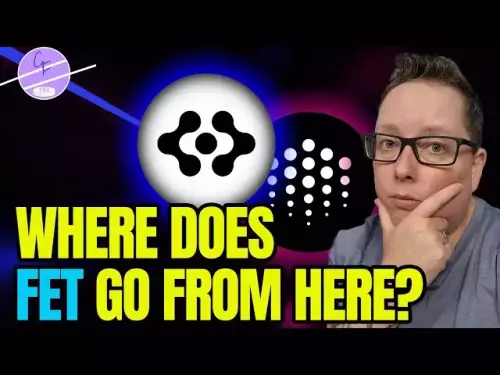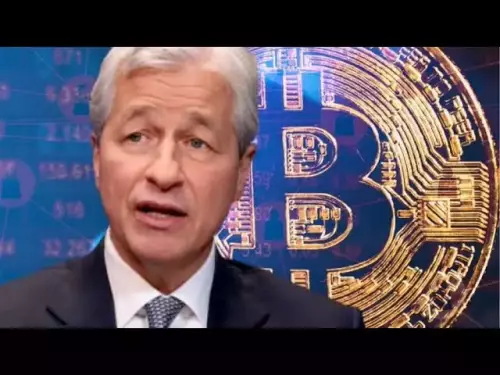 |
|
 |
|
 |
|
 |
|
 |
|
 |
|
 |
|
 |
|
 |
|
 |
|
 |
|
 |
|
 |
|
 |
|
 |
|
Cryptocurrency News Articles
Unlock the Future: RWA Tokenization on Ethereum Explained
Oct 10, 2025 at 09:17 pm
Real-world asset (RWA) tokenization on Ethereum is revolutionizing global finance. This guide explores how Ethereum facilitates RWA tokenization, its benefits, and the future of trillion-dollar tokenized economies.

Yo, crypto enthusiasts! Ever heard of tokenizing real-world assets (RWAs) on Ethereum? It's not just buzz—it's a game-changer transforming everything from real estate to fine art into digital tokens. Let's break down how Ethereum's making this happen and why it's the future of finance.
Understanding RWA Tokenization
RWA tokenization converts ownership rights of assets (think real estate, gold, or even intellectual property) into digital tokens on a blockchain. This simplifies ownership transfers, boosts liquidity, and opens up high-value assets to more investors. Forget the old-school intermediaries; smart contracts automate transactions, making finance efficient and inclusive.
Why Ethereum is King
Ethereum's the go-to platform for RWA tokenization because of its versatility, programmability, and solid track record. It was the first to introduce smart contracts, and its compatibility with token standards like ERC-20 and ERC-721 makes creating asset-backed tokens seamless. Plus, it's got the largest developer community in the blockchain world, ensuring continuous innovation and security. Institutions and regulatory bodies dig Ethereum because it supports compliance frameworks and interoperability with financial networks.
How Ethereum Facilitates Tokenization
Ethereum does more than just create tokens. Its decentralized infrastructure supports the entire lifecycle of tokenized assets—from issuance to trading and governance. Smart contracts are the backbone, executing predefined conditions automatically. Ownership data is embedded into these contracts, making transactions immutable and transparent. These tokens can be traded on decentralized exchanges (DEXs) and integrated into DeFi protocols, making assets more dynamic and productive.
The Tokenization Process
Tokenizing RWAs involves asset selection, legal compliance, token issuance, and market integration. It starts with identifying a high-value asset like commercial real estate. Then, a legal framework is set up, often using a Special Purpose Vehicle (SPV), to hold the asset and issue blockchain tokens as proof of ownership. Smart contracts define the token’s characteristics, and the tokens are issued to investors through a secure platform. Integration with DeFi platforms allows investors to buy, sell, or stake these tokens.
Smart Contracts: The Heart of RWA Tokenization
Smart contracts automate crucial aspects of tokenization, like issuance, distribution, and ownership transfer. They eliminate intermediaries and minimize fraud. For instance, a smart contract can automatically distribute rental income to token holders in a tokenized real estate project. Compliance rules, like KYC verification, can also be coded into the contract, ensuring only eligible investors participate.
Token Standards
Ethereum’s token frameworks make creating interoperable digital assets easier. ERC-20 is used for fungible tokens like commodities, while ERC-721 is ideal for unique assets like real estate. ERC-1155 offers a hybrid approach for diversified asset portfolios. These standards ensure tokens are compatible across wallets and DeFi platforms, enhancing liquidity and usability.
Compliance and Regulation
Tokenizing RWAs requires sticking to legal and regulatory standards. Tokens must comply with financial regulations specific to each jurisdiction. Ethereum's flexibility allows integrating KYC/AML verification and investor accreditation checks into smart contracts. Compatibility with frameworks like MiCA in the EU and SEC guidelines in the U.S. helps launch globally compliant tokenized assets.
Integrating with DeFi
Ethereum-based RWA tokenization's biggest flex is its integration with DeFi. Tokenized assets can be used as collateral for loans and yield generation within DeFi protocols, bridging traditional finance with decentralized systems. For example, tokenized real estate can be deposited into a DeFi lending platform to borrow stablecoins. This enables real-world assets to participate in digital economies.
Scalability Solutions
Scalability has been a challenge, but layer-2 solutions are addressing this by processing transactions off-chain. Technologies like Optimistic Rollups and sidechains such as Polygon make Ethereum-based RWA tokenization scalable and cost-effective. Ethereum's transition to Proof-of-Stake (PoS) also enhances energy efficiency and network performance.
Building Trillion-Dollar Platforms
Building a massive RWA tokenization platform needs a strategic approach combining tech, compliance, and scalability. The first step is identifying high-value asset classes with global appeal, like real estate or green energy projects. The platform should have a seamless user experience and integrate features like instant trading and automated compliance. Partnerships with financial institutions and regulators ensure legitimacy.
The Role of Oracles
Oracles connect real-world data with blockchain networks. They feed verified external data, like property valuations or commodity prices, into smart contracts. Integrating oracle solutions like Chainlink ensures data accuracy, enabling dynamic pricing and transparent asset valuation.
Institutional Adoption
Major financial institutions are exploring Ethereum-based platforms for issuing digital bonds and real estate shares. They recognize Ethereum’s security and compliance flexibility. As governments and corporations embrace blockchain, the market for tokenized assets is set to explode. Platforms leveraging Ethereum’s infrastructure stand to capture a huge slice of this value.
The Future
The future of Ethereum-based RWA tokenization looks bright. Widespread adoption is coming, and tokenized assets will become mainstream investments. Innovations in interoperability and AI-driven asset management will further expand Ethereum’s capabilities. The convergence of tokenization, DeFi, and regulatory clarity could make Ethereum the foundation for platforms transforming global finance.
In Conclusion...
Ethereum is at the heart of the RWA tokenization revolution, turning traditional assets into digital, programmable investments. Its smart contract architecture and growing scalability make it ideal for building next-gen financial systems. So, strap in, because Ethereum's about to take the financial world on a wild ride! It's not just innovation; it's the evolution of global finance, baby!
Disclaimer:info@kdj.com
The information provided is not trading advice. kdj.com does not assume any responsibility for any investments made based on the information provided in this article. Cryptocurrencies are highly volatile and it is highly recommended that you invest with caution after thorough research!
If you believe that the content used on this website infringes your copyright, please contact us immediately (info@kdj.com) and we will delete it promptly.
-

-

-

-

- Decoding Crypto Trends: Bittensor's Bull Run, Cardano's Dip, and LivLive's Presale Buzz in 'Uptober 2025'
- Oct 11, 2025 at 09:01 am
- Analyzing the latest crypto market moves: Bittensor's surge, Cardano's potential pullback, Aurelion's gold-backed treasury, Solana's transaction dip, and LivLive's presale allure. Your guide to navigating crypto trends.
-

-

-

-

-































































